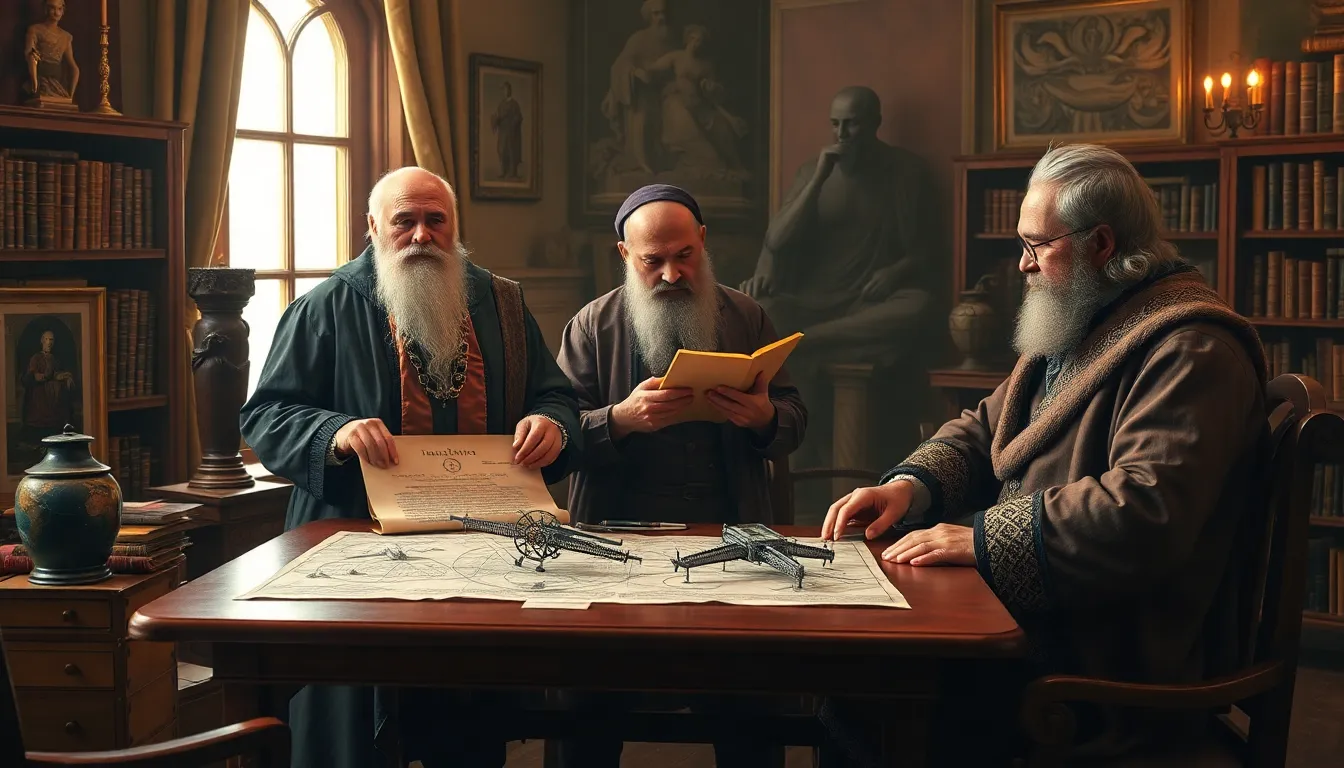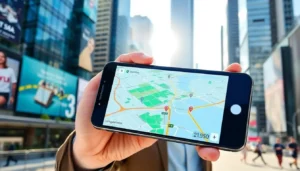Table of Contents
ToggleEver wondered what the future holds? Turns out, quite a few remarkable individuals have made it their life’s mission to peek behind the curtain of time. From ancient sages to modern-day tech gurus, these people have all tried to predict what’s next, sometimes with astonishing accuracy, and at other times, well, not so much. In this exploration, you’ll meet the historical figures and contemporary influencers shaping our understanding of what’s to come. Buckle up: predictions are as wild and fascinating as a roller coaster ride.
Historical Figures in Future Prediction

Throughout history, there have been individuals whose insights into the future seemed almost prophetic. Think of Nostradamus, who penned countless cryptic verses that many believe forecasted major world events. His mystical charm continues to capture the imagination.
Then, there’s the remarkable case of Leonardo da Vinci. Beyond painting masterpieces, he envisioned flying machines and other inventions that were centuries ahead of his time. His sketches and journals provide glimpses into futuristic thinking long before modern technology existed.
In the realm of philosophy, Plato’s dialogues include discussions about ideal societies and governance, indicating a deep understanding of human nature and its evolution. He painted a picture of futures that continue to inspire debates even today.
These figures share a common thread: their ability to anticipate change and articulate it in ways that resonate. Their predictions opened doors to discussions about possibilities and encouraged people to think differently.
Modern Influencers and Visionaries
Fast forward to today, and we find a new breed of futurists and visionaries. Take Elon Musk. With his eyes set on Mars and dreams of sustainable energy, Musk challenges our notions of what’s achievable. His ventures in space exploration and electric vehicles have not only disrupted industries but also sparked conversations about our future on Earth and beyond.
Another modern influencer is Ray Kurzweil, known for his work in artificial intelligence. Kurzweil’s predictions about technological singularity, when machines surpass human intelligence, ignite both excitement and apprehension. His bestselling books and talks are influential in shaping the discourse on technology’s trajectory.
Then there’s Jane Goodall, not just a pioneering primatologist but also a vocal advocate for sustainability. Her work highlights the impact of human behavior on our planet, forcing society to reconsider how we interact with nature. She predicts a future that hinges on our respect for the environment and biodiversity.
Each of these individuals brings unique perspectives, challenging the status quo and urging society to innovate and adapt as we venture into the unknown.
Methods Used in Predicting The Future
How do these people come up with their predictions? Different methods bring different insights. For some, it’s intuitive. They rely on gut feelings, observation, and understanding of human behavior. Others apply more analytical approaches, using data to discern patterns and trends.
Futurists often engage in scenario planning, creating diverse potential futures based on current trajectories. This technique allows them to visualize various outcomes and inform decision-making. Brainstorming sessions with diverse groups can also lead to innovative ideas, leveraging collective insight.
Another methodology is Delphi forecasting, where experts systematically provide feedback on predictions. This iterative process lends a degree of credibility to the forecasts by utilizing a pool of knowledgeable individuals.
Plus, science fiction plays a surprisingly significant role in shaping expectations of the future. Many tech innovators cite sci-fi works as inspirations that push them towards groundbreaking ideas. These imaginative tales often set the stage for real-world technological advancements.
The Role of Technology in Future Prediction
Technology itself has become an invaluable tool for predicting the future. Big data analytics enables scientists and business strategists to analyze vast amounts of information and contextualize human behavior. Machine learning algorithms sift through massive data sets, identifying trends often missed by the human eye.
Social media platforms have also turned into prediction arenas. By analyzing what captures public interest, businesses can anticipate market shifts and consumer desires. The viral nature of online content reveals trends that go beyond traditional advertisement channels.
Also, advanced modeling techniques in fields like climate science offer predictive insights about environmental changes, influencing policy and action around the globe. The ongoing development of predictive analytics continues to revolutionize industries, reshaping our understanding of futures.
Skepticism and Criticism of Predictions
Even though the efforts of so many talented individuals, skepticism around future predictions remains rampant. Historical inaccuracies often taint the credibility of well-known prophets and futurists. Skeptics emphasize that predicting the future is fraught with uncertainty and often pure guesswork.
Environmental predictions about climate change, for instance, face criticism. While the scientific community provides robust models based on current data, some argue about the effectiveness and acknowledgment of potential variables, which complicate projections.
Besides, the media sensationalizes predictions, leading to a distorted perception of futurists as mystics or charlatans. This disparity between reality and sensationalism can further erode trust in genuine research and thoughtful insight.
Critics argue that while exploring future possibilities is crucial, clinging to prophetic expectations can lead to tiresome disillusionment.
The Impact of Predictions on Society
The act of predicting the future has deep implications for society. Predictions can inspire innovation and encourage people to work towards collective goals. The space race, sparked by individuals expressing visions of interstellar travel, reshaped industries and united nations around significant achievements.
Conversely, a fixation on predictions can lead to anxiety. Individuals might feel overwhelmed by expectations or become paralyzed by fear of the unknown. Should the predictions go awry, populations risk experiencing significant disillusionment or resistance to progress.
Nevertheless, predictions also serve as crucial tools for policymakers. Utilizing insights gleaned from futurists, they navigate challenges facing society, from technological advancements to environmental sustainability. Educators and thinkers leverage these predictions to foster critical thinking and better prepare future generations. Eventually, predictions inspire collective discourse around what’s possible.







